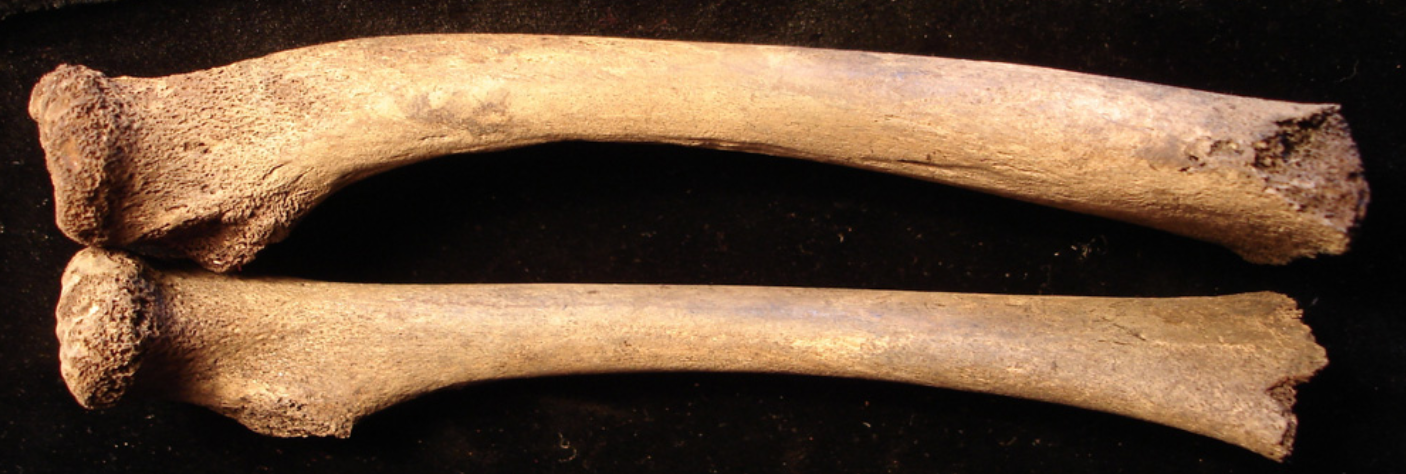Jelgava Holy Trinity Church
- Period: Late Medieval
- Location: Latvia
- Burials: 108 individuals
- Archaeologists: E. Pētersone-Gordina, G. Gerhards, & T. Jakob
- Related Keyword/Categories: Paleopathology, Identity, Inhumation

Petersone-Gordina, Gerhardsb and Jakob (2013) examines patterns of health and nutrition among a wealthy 17th to 18th century German community in Jelgava, Latvia. This city was the center of the Duchy of Courland and Semigallia. The ruling German population would have had access to a high number of resources, both local and imported. However, this was also a period of political instability, which would have affected the health and access of all levels of society. This area was fought over between a number of countries, and this caused war, famine and plague to strike people of every socioeconomic class. The goal of this study is to determine how the wealthy would have been affected by this instability. The cemetery was excavated by the Jelgava Holy Trinity Church during a period of construction between 2009 and 2010. The church was built by the German community in 1615, and was used until 1780 when this type of burial within buildings was banned. The burials are traditional Christian ones, so they are placed with their heads to the west facing the east. No grave goods were found other than a few small denominational coins. The bodies were likely wrapped in shrouds, evidenced by the lack of dress fittings or jewelry. There is some variation in the coffins seen in the different types of wood, coffin fittings, and bricks. The sample consists of 108 individuals found underneath the floor of the church, including 39 males, 41 females, and 28 sub-adults. Dental health and indicators of stress such as periostitis and cribra orbitalia were recorded, as well as indicators of vitamin deficiencies. Cribra orbitalia, a porosity found in the orbits of the skull due to nutritional deficiencies and anemia, was found in 25 individuals. However, most were healed indicating the problems occurred in childhood. Evidence for scurvy, a vitamin C deficiency, includes bilateral periosteal reaction (new bone growth on both the right and left bone) on the lower limb bones, tooth loss and periodontal disease. This was found in 14 adults and 6 sub-adults. Rickets, a vitamin D deficiency, is often seen in warping of the long bones, flaring of the rib ends, and flaring of the ends of bones. No adults showed evidence of this deficiency, but there were two sub-adults who potentially were deficient. The high frequency of cribra orbitalia and scurvy indicate that there was nutritional stress in this community. Further evidence was seen in the high rates of linear enamel hypoplasia- a phenomenon that causes bands of decreased enamel on the teeth due to poor nutrition and stress while they are developing. The lack of evidence for rickets shows that at least they had access to sunlight to prevent a vitamin D deficiency. The evidence points to childhood stress being fairly high, as seen in the prevalence of linear enamel hypoplasia and a variety of healed indicators of nutritional stress in the adult population. The fact that they were able to survive into adulthood even with the nutritional stress may be indicative of their higher status and general ability to secure more resources. This supports the conclusion that the wealthy faced a number of stressors, but also reveals that they were able to survive them.
References: E. Petersone-Gordina, G. Gerhards, & T. Jakob (2013). Nutrition-related health problems in a wealthy 17–18th century German community in Jelgava, Latvia International Journal of Paleopathology DOI: 10.1016/j.ijpp.2013.01.002

